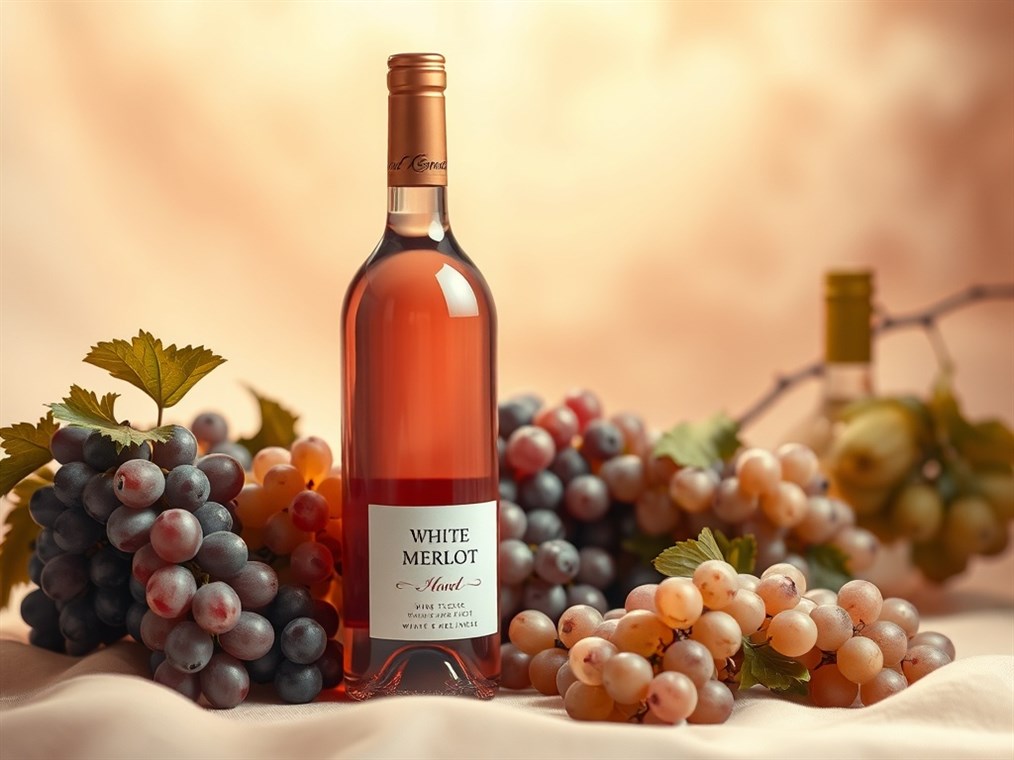White Merlot: Sweet Treat or Dry Delight? Let’s Spill the Wine!
Ever find yourself staring at a bottle of White Merlot, wondering if it’s going to be a sugar bomb or something a bit more sophisticated? You’re not alone! This blush wine can be a bit of a mystery, so let’s uncork the truth and get to the bottom of its sweetness.
First things first, despite the name, White Merlot isn’t actually white wine. Tricky, right? It’s a rosé, made from the same Merlot grapes that give us those lovely reds. The real difference lies in how it’s made.
Think of it this way: with a regular red Merlot, the grape juice hangs out with the skins for a couple of weeks, soaking up all that color, tannin, and flavor. But with White Merlot? It’s a quick dip – just a few hours of skin contact. That’s why it ends up with that pretty pink hue and a lighter feel.
Now, about that sweetness… White Merlot usually lands somewhere between semi-dry and off-dry. In plain English, that means it’s got a touch of sweetness, but it’s not like drinking juice. It’s a delicate balance. You see, during fermentation, the yeast eats up the grape sugars and turns them into alcohol. If they eat up almost all the sugar, you get a dry wine. White Merlot usually has a tiny bit of sugar left over, giving it that subtle sweetness.
But here’s a fun fact: even if a wine isn’t super sweet on paper, those fruity flavors can trick your brain!
Speaking of flavors, what can you expect from a glass of White Merlot? Well, think bright and crisp. I often get notes of fresh raspberries, cherries, and strawberries. Sometimes there’s a hint of citrus, like orange peel, or even a touch of melon or tropical fruit. It’s light-bodied, refreshing, and easy to drink – perfect for a warm afternoon.
So, how do they actually make this stuff? It all starts with harvesting those Merlot grapes at just the right moment. Then, they crush the grapes to release the juice and get rid of the stems. Next comes that crucial skin contact – just a few hours to give the wine its color. After that, they press the juice, ferment it in stainless steel tanks to keep those fruity flavors bright, and maybe age it in oak for a little extra oomph.
And what about food? White Merlot is surprisingly versatile. It’s great with savory dishes like barbecued meats or anything with a tomato sauce. It also shines with lighter fare like salads, fresh cheeses, or even a veggie quiche. And for dessert? Try it with a fruit tart – you won’t be disappointed!
Now, you might be thinking, “Isn’t this just like White Zinfandel?” They’re similar, for sure, with that pink color and hint of sweetness. But White Zinfandel tends to be sweeter overall, while White Merlot often has more of those citrus and tropical notes.
Here’s a cool tidbit: In the Ticino region of Switzerland, White Merlot is a local specialty! Back in the ’80s, they had a Merlot surplus, and someone had the bright idea to make a white wine out of it. Now, it’s a big deal!
So, there you have it. White Merlot is typically a semi-dry wine with a lovely balance of sweetness and fruit. It’s light, refreshing, and easy to enjoy. Whether you’re sipping it on its own or pairing it with food, it’s a fun and approachable wine that’s definitely worth exploring. Cheers to that!

